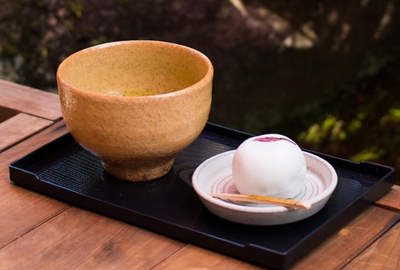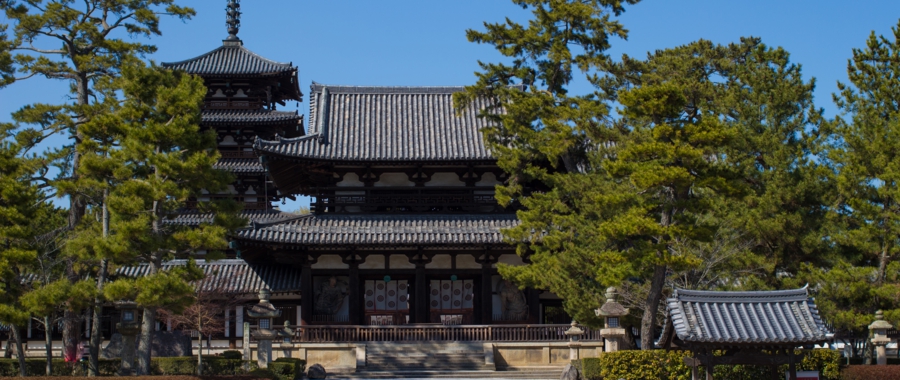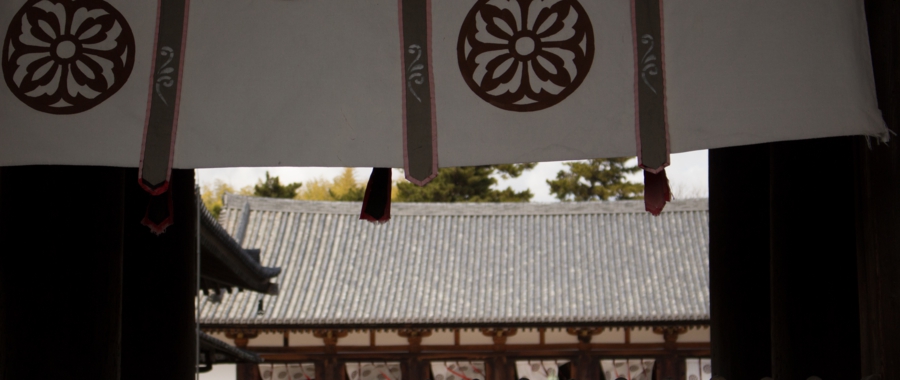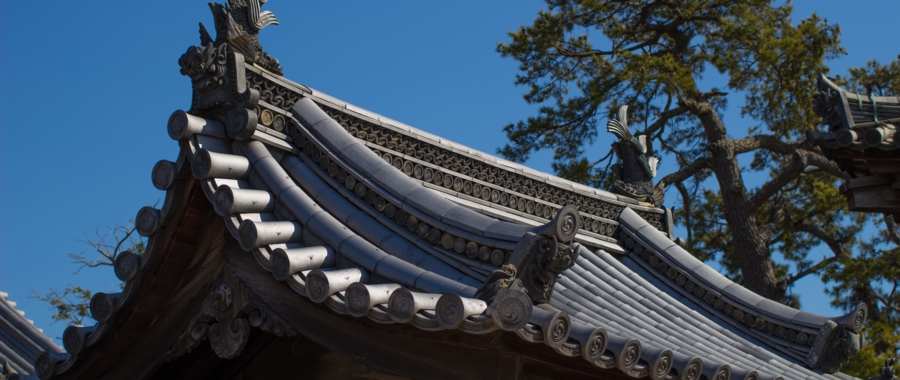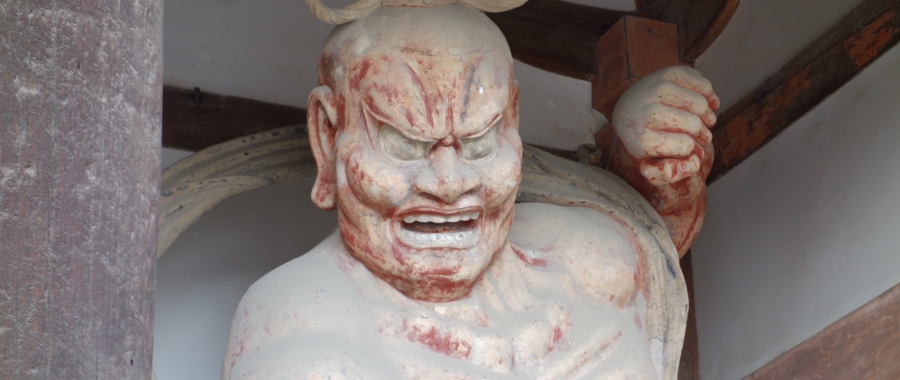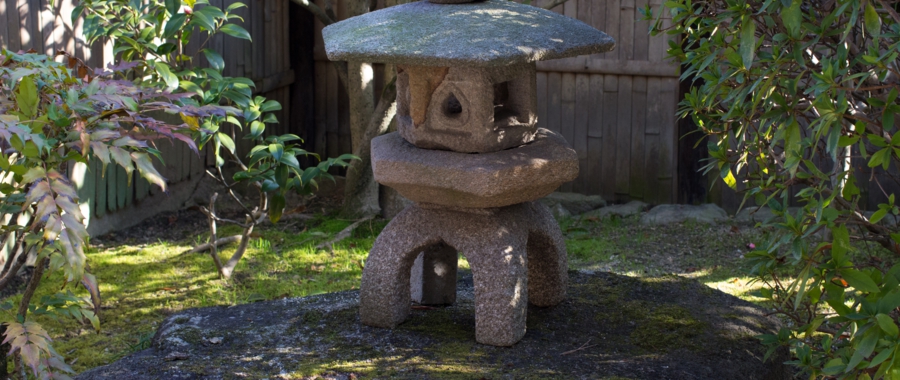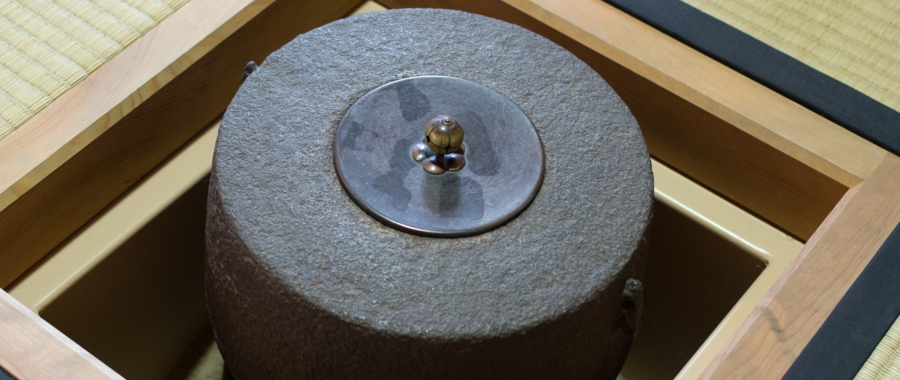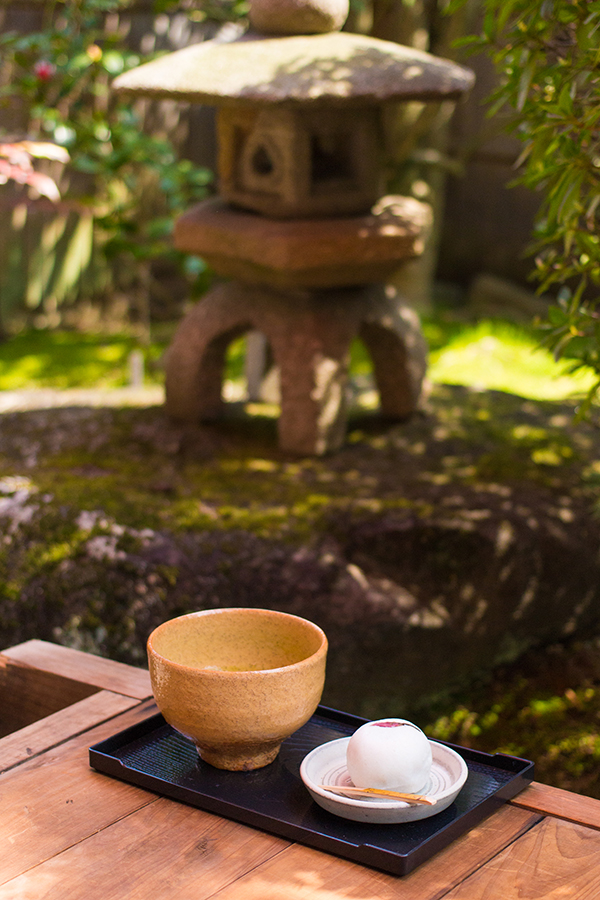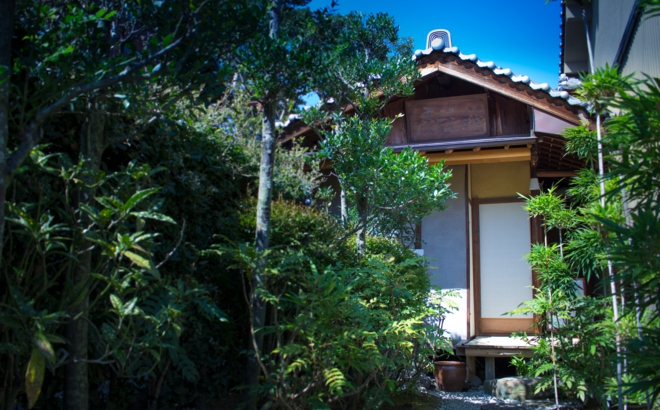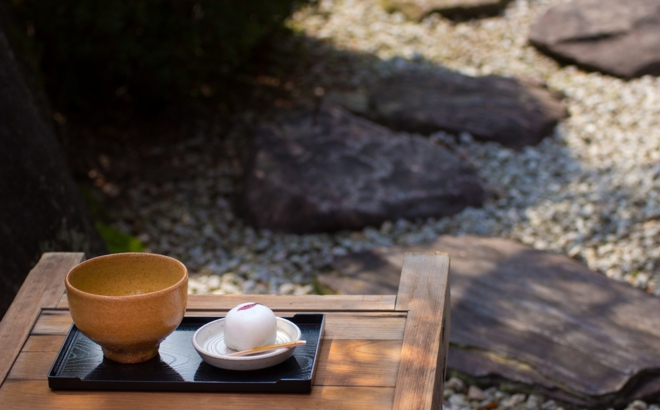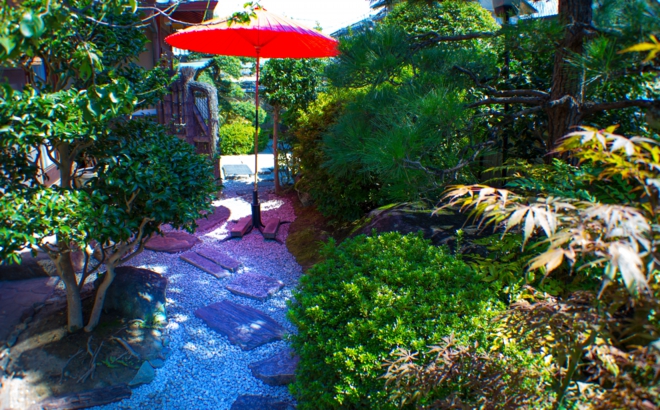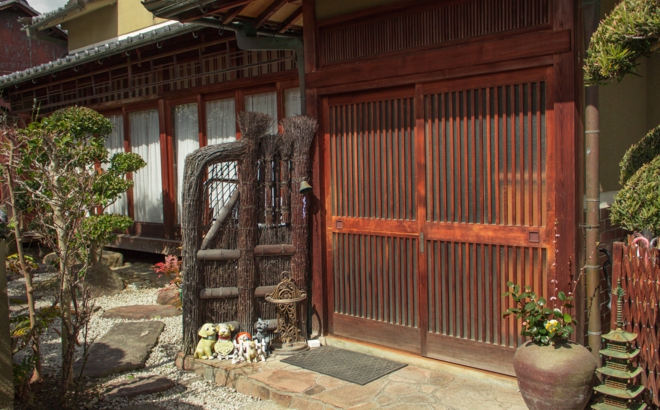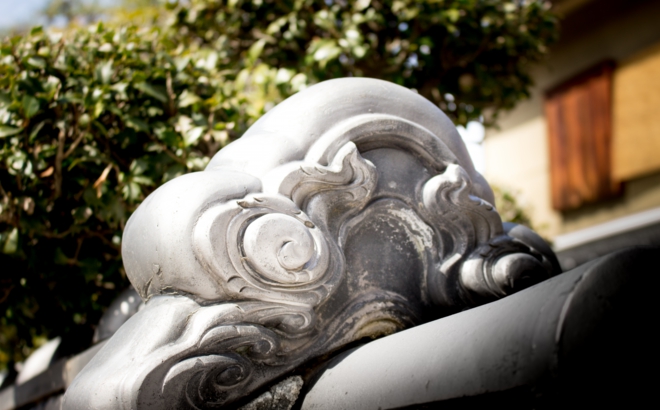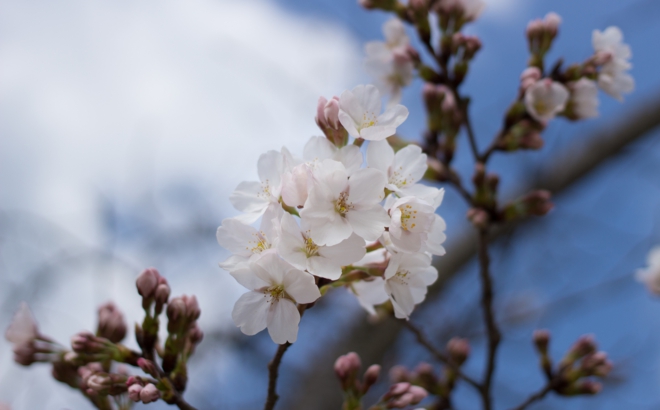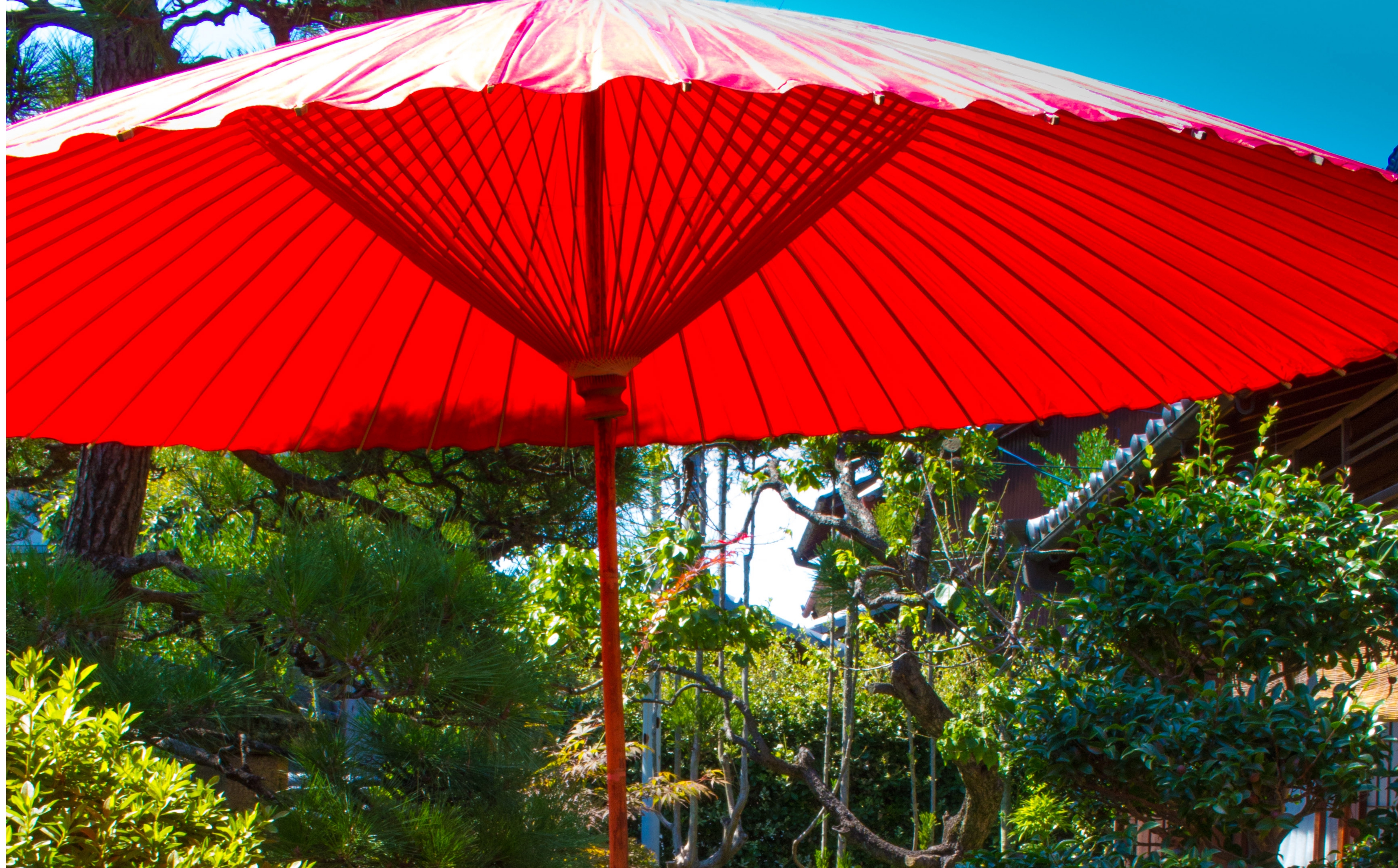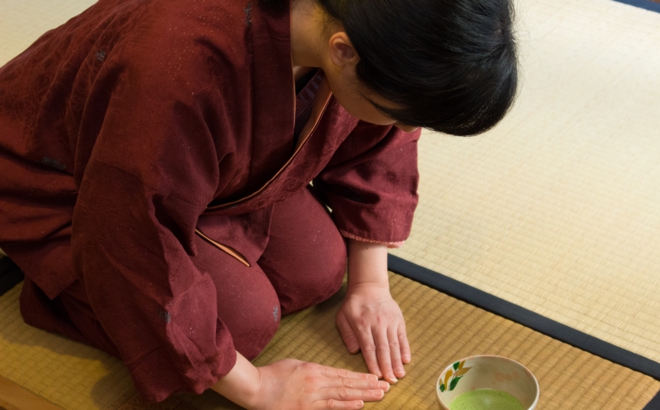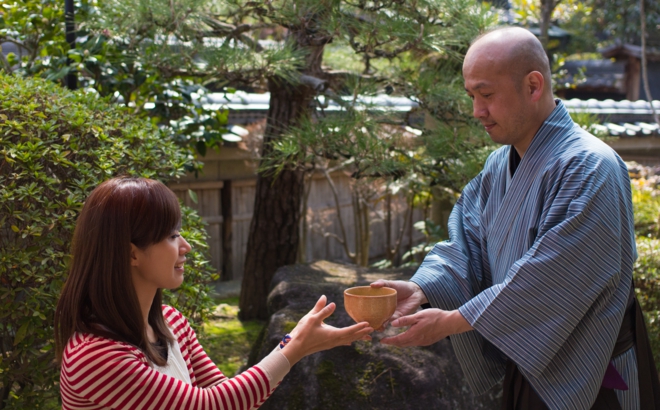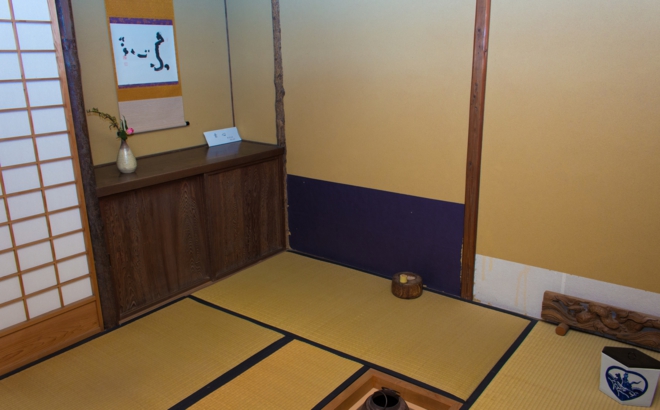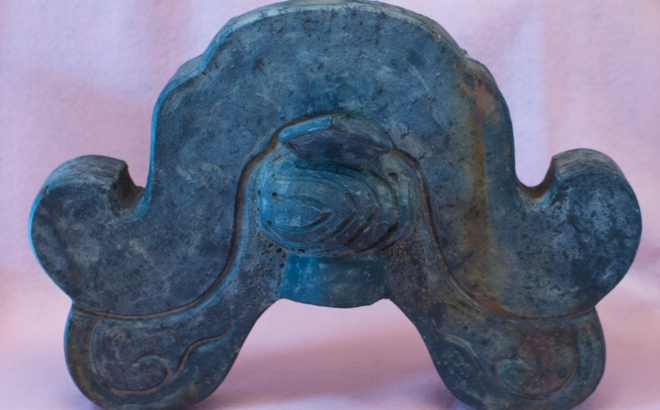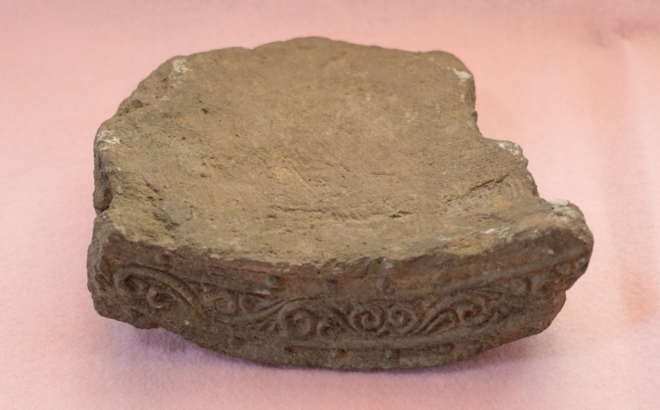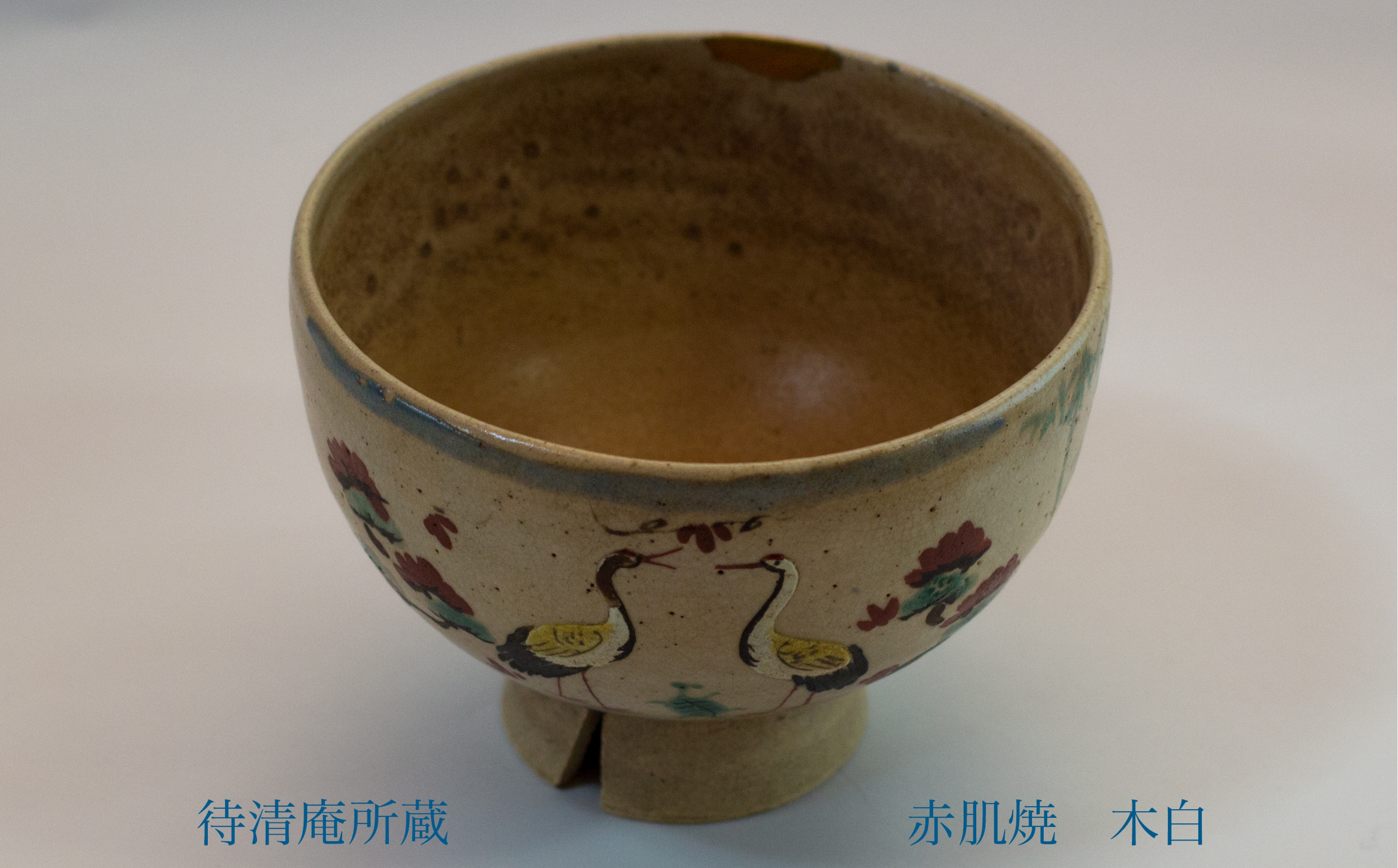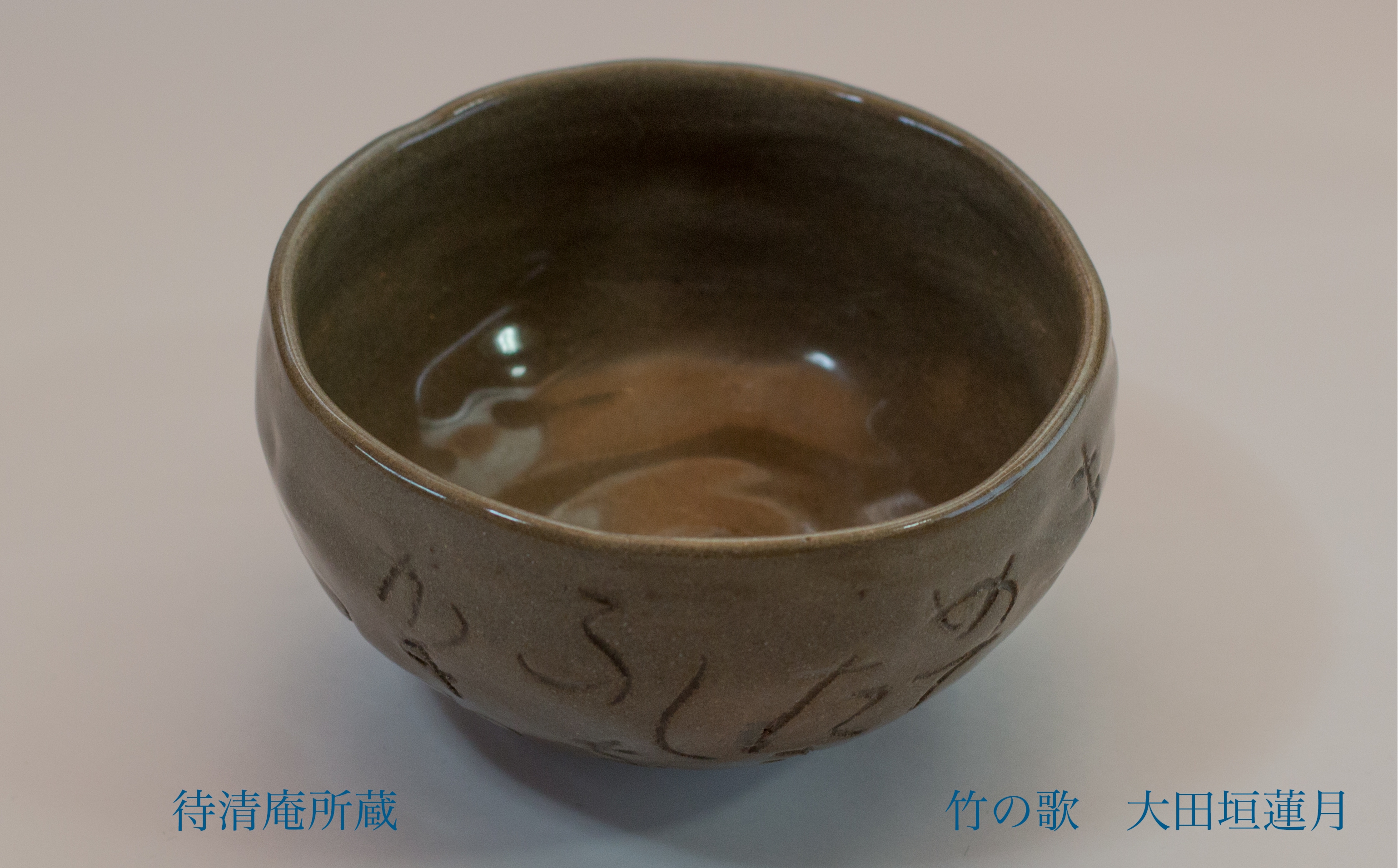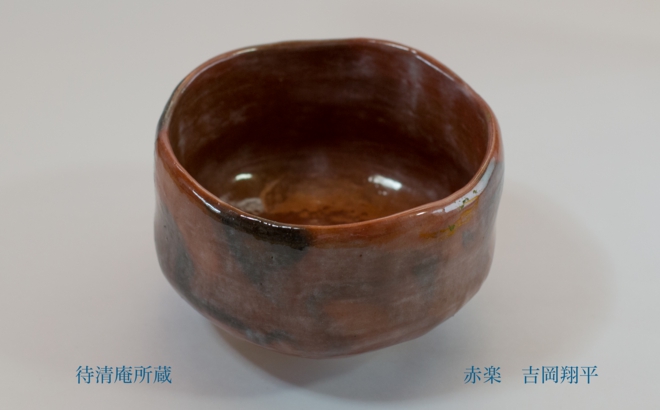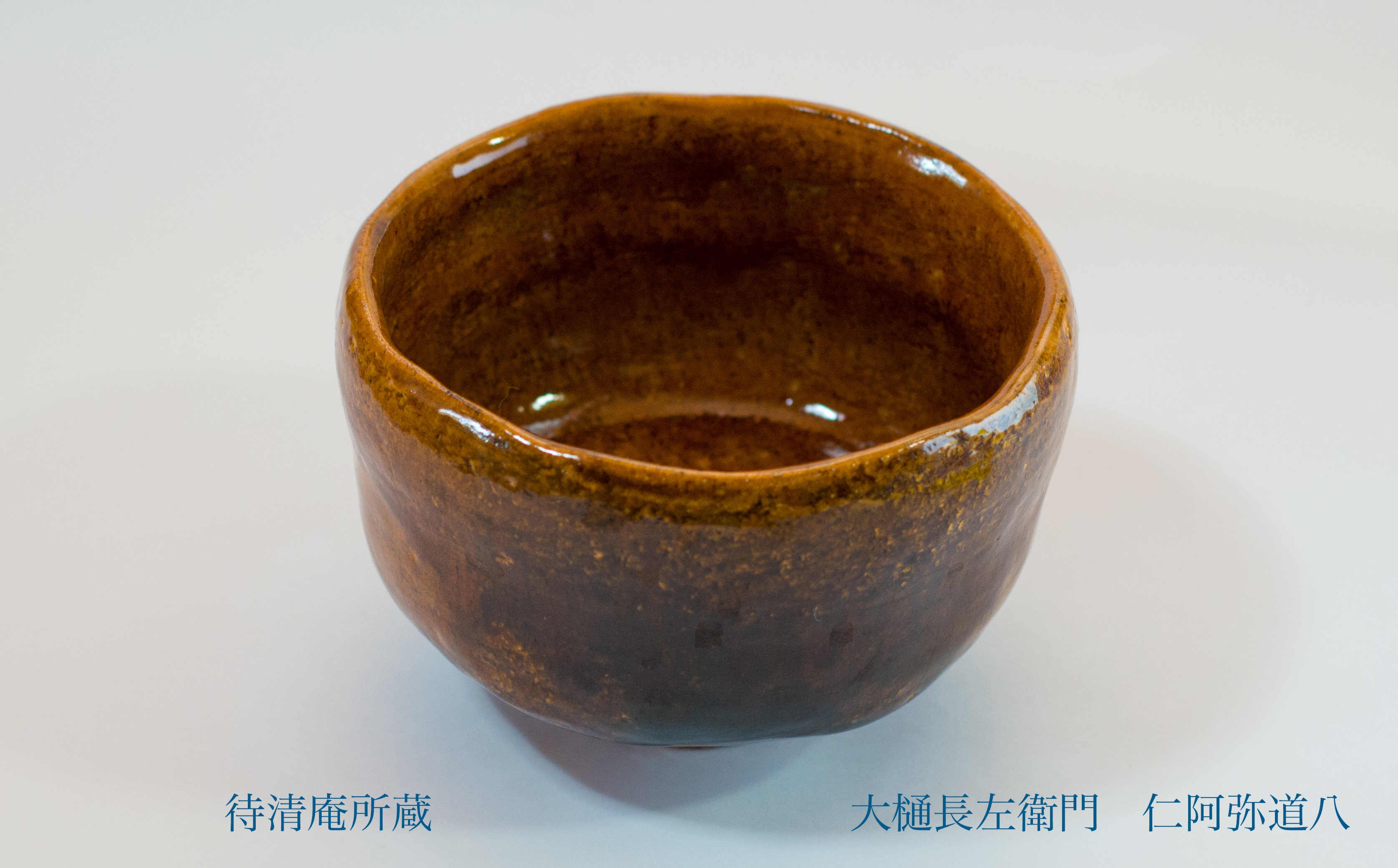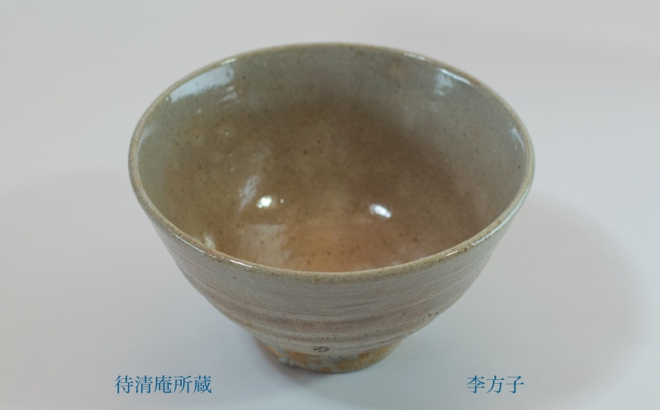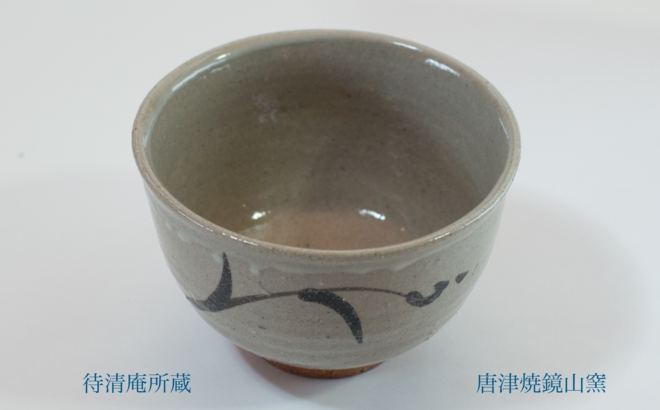Since 1812 Ikaruga Nara
The History of Taiseian
Taiseian was built by Dai-sozu Kakken, about 200 years ago.
He was born in 1764 in the area south of Koriyama Castle, and died when he was 76 years old, comparatively longer life at that time. He worked at Horyuji as a Buddhist monk, chose Yanagihara Chunagon Takamitsu as his guardian, and received Dai-sozu, the second rank in the Buddhist clergy system, in 1812.
He built his own teahouse at Horyuji, based on his knowledge on tea ceremony, and named it Taiseian. One of the historical documents tells that he sent letters to his friends to invite them to the tea ceremony.
In 1870, Jitsujo, Horyuji-Zenjuin Chief priest, quit his position and started to live here. He worked here as a general representative, and wrote journals and official documents for Horyuji for about two decades. He was the person who replaced the teahouse at Zenjuin here. He enjoyed tea ceremony as well.
Detailed information on how and when this teahouse was moved is still unclear. The teahouse could be disassembled once or pulled to this place after breaking walls around the teahouse. This signboard ‘‘ Taiseian’’ was written by Zen Hamurozan Kakuho Zenshi, 93 years old at that time, in 1837, and sculptured by Kakken when he was 75 years old. This signboard could be hanged another place because of the size. The tea kettle is stored in Horyuji now.
Teahouse ‘‘Taiseian’’ was built about 200 years ago, and was moved here later. We serve Japanese traditional tea. You’ll feel Japanese beauty and serenity from viewing the Japanese garden and tea utensils such as jugs, tea cups, tea kettles, hanging scrolls in the teahouse.
We hope you will experience and enjoy the spirit and aesthetics of traditional Japan coming from our hospitality and the decorations inside the teahouse.
MENU
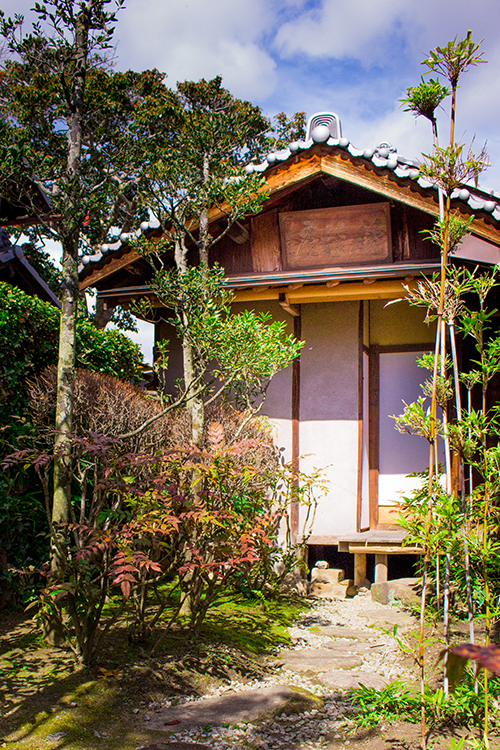
Business day and hours
Open Everyday 10:00-17:00 (close irregularly)
Phone and Access
PHONE : 080 - 1424 - 2148
PLACE : 2-1-6, Horyuji, Ikaruga-cho, Ikoma-gun, Nara-ken

